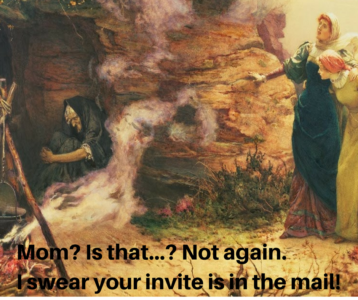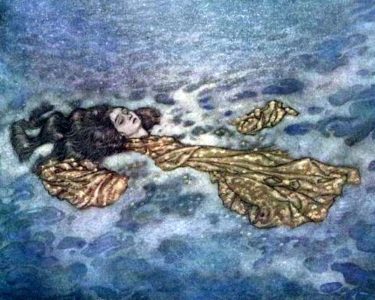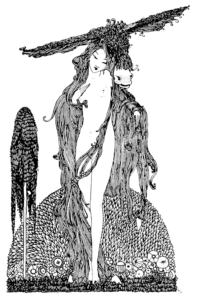Sarah Morse Adams's Blog, page 2
February 20, 2017
Historical Real-Life Snow White Stories
In 1533, Philip IV, Count of Waldeck and Margaret of East Frisia had a daughter (their sixth child) and named her Margaret. They went on to have three more children together, but in 1537, the countess died. Two years later, the count married a woman named Katharina of Hatzfeld.
Katharina didn’t much like Margaret, and by the time the girl was seventeen her stepmother forced her out of the house. She moved to Brussels, hoping, I’m sure, to find some peace.
She might have found it, but if so, it wouldn’t last.
By the time she was twenty-one she was dead–her friends thought the illness so mysterious that it just had to be poison. The handwriting on her Last Will and Testament was shaky enough to indicate tremors… a symptom of poisoning.
So, let’s go over what we have here: a noble woman, an evil step-mother, a poisoned girl.
Does that remind you of something?
If it sounds like Snow White to you, you’re not alone.
Is Margaret von Waldeck the real Snow White?
In 1994, a man named Eckhard Sander published Schneewittchen: Märchen oder Wahrheit? (Snow White: Fairy Tale or Truth?). In it, he claimed to have uncovered the real Snow White, our good friend Margaret.
Except Margaret’s tale doesn’t end happily ever after. Margaret’s tale ended when she fell in love with a Spanish Habsburg prince who would later become Philip II. Someone apparently didn’t like it, and she was dead soon after. And in this real-life story, it’s not the evil stepmother who killed Margaret–she was already dead years earlier. Who was it? Was it the King of Spain, Philip’s father? Or Margaret’s father? We’ll probably never know (though now I really want to know).
There’s a glaring error in this theory that, to me, totally debunks it. And I haven’t seen other people talk about it. In the Grimm’s original retelling of this folktale, written in 1812, it’s not Snow White’s stepmother who tries to poison her… but her mother. The removal of four letters s.t.e.p. make the tale even more chilling. It’s her mother who wonders if she is fairer than Snow White. It’s her own mother who tries to poison her.
This is not the case for Margaret. However tragic her death may have been–and who knows, she could have died of something other than poison–she didn’t have to go through the indignity of her own mother killing her.
But there’s yet another possibility for the real Snow White. Her name is: Maria Sophia von Erthal.
Is Maria Sophia Margarethe Catharina von Erthal the real Snow White?

“Talking Mirror” By Manfred Scherer (Foto: Manfred Scherer/Spessartmuseum Lohr am Main) [Public domain], via Wikimedia Commons
Maria was born to Philipp Christoph von Erthal in 1729 and, like Margaret, her mother died when she was still young. Philipp married again to a woman named Claudia Elisabeth, who, by all accounts, was a domineering woman who favored her own children over her stepchildren.But the parallels end there. It doesn’t seem as if Maria was banished or ran. In fact, Maria seems to drop out of most accounts altogether, which is sad. The story isn’t really about her. She’s just a vehicle.
The real character in this story, the one that possibly did inspire the “real” Snow White, in a way, is the location, the setting.
The Spessart Museum in Germany has a nice little PDF on their theories about Maria Sophia. You can read the full version here, taking it with a grain of tourist-grabbing salt, but here’s the gist of their argument that they hold claim to the one true Snow White:
Maria was born in Lohr am Main. In the 1700s in Lohr, there was a company that produced elaborately decorated “talking mirrors.” These mirrors were known to “speak the truth” and were made with uplifting sayings etched on them. It is thought by some that Maria’s father gave one of these mirrors to her stepmother.
The Spessart region, which contained Lohr, was full of mines… mines where they would send small children into tight places. The implication is that these children could have been the seven dwarfs. That, or, the PDF claims, the lower classes of Spessart folk had a diminished stature because of malnourishment.
And the poisoned apple? There are apple orchards everywhere in the the region, of course.
What’s most interesting to me, is that the Brothers Grimm were from Hanau, Germany, which is right at the edge of the Spessart region. Could these elements, or the mood of the region, have inspired this tale? Absolutely. Could Maria or Margaret have been the “original” Snow White… probably not.
January 15, 2017
Week 2 of 52 Books Challenge: “East of Eden” Review
Book Description:
Set in the rich farmland of California’s Salinas Valley, this sprawling and often brutal novel follows the intertwined destinies of two families—the Trasks and the Hamiltons—whose generations helplessly reenact the fall of Adam and Eve and the poisonous rivalry of Cain and Abel. Here Steinbeck created some of his most memorable characters and explored his most enduring themes: the mystery of identity; the inexplicability of love; and the murderous consequences of love’s absence.
Buy on Amazon
My rating: 5/5 stars
This book really crept up on me.
For some reason, I was resistant to starting this book, even though my best friend in college adored it, then resistant to continuing it once I started (maybe because it was so darn LONG and I was already coming off of a long book)–but BOY am I glad I kept with it.
Let’s get one thing straight: the characters in this book (most of them) are deplorable. They cheat, lie, steal, and ruin lives without a second thought. Even the sympathetic ones aren’t thoroughly likable. They ignore their children, or they’re so self-righteous it makes me want to vomit.
I usually run the other way from “literary” books with deplorable characters, but something kept me hooked in.
Maybe it was the twisty plot, or the brilliant epic quotable passages:
“All great and precious things are lonely.”

Or
“There’s more beauty in truth, even if it is dreadful beauty.”

Or
“When a man says he does not want to speak of something he usually means he can think of nothing else.”

Or
“We have only one story. All novels, all poetry, are built on the neverending contest in ourselves of good and evil. And it occurs to me that evil must constantly respawn, while good, while virtue, is immortal. Vice has always a new fresh young face, while virtue is venerable as nothing else in the world is.”

Or this one, which is a good reminder as a writer:
“And, of course, people are interested only in themselves. If a story is not about the hearer he will not listen.”

(I could go on and on with those, but I’ll continue my review now.)
The book is slow to start, a multi-generational family epic following two families, mostly in the Salinas Valley in California. It tackles themes of good and evil, love and the pains of love, war, parenting, and more. There were some parallels to the biblical stories of Cain & Abel (both subtle and not so subtle). The world is vividly drawn and the characters mostly believable, except for Cathy. She is the most unapologetically evil person I’ve read in recent memory. Cal is a really interesting study in someone who thinks he is evil, but tries so hard to be good.
As I was reading, I started at a 3-star, then bumped it up to a 4, and by the end it was a full-fledged 5 (and I don’t give out many of those). The element that brought it to the next level was I kept thinking about the characters & the story after the fact. This book will stick with me for awhile.
I’ll admit, not all the characters were horrible. I really liked the Hamiltons–especially Samuel. They seemed the most “realistic” of the bunch, even with their issues. And I liked Lee, too! And Abra. I guess those three gave something to hang on to throughout the many trials in this book.
I recommend this thoroughly. Stick with it through the halfway point if you’re struggling! In my opinion, it’s worth it.
If you enjoyed this review, please check out the others on my 52 books of 2017 page. If you’d like to join in the challenge, friend me on Goodreads.
January 1, 2017
Challenge: 52 Books in 2017
HAPPY NEW YEAR!
I’m not one for New Year’s resolutions, but this year I’m going crrrrr-aaaazy.
I’m going to read 52 books in 2017. That’s 1 per week, and since this year starts on a Sunday, it’ll be a nice round challenge. Or at least it will start round. I can’t do the math to figure out the rest.
I’m super excited about this for a few reasons.
There are so many books that I’ve been meaning to read forever. Ideally, I’d like to keep up with the books everyone’s talking about, as well as the popular fairy tale retellings, and some non-fiction sprinkled in. This year I finally got to The Goldfinch and The Time Traveler’s Wife (about time, eh?). There’s a reason these books go viral and, as a writer, I should be reading them!
I overdid it on podcasts this year. Too much politics, mostly, but also too much information in general. I’ll replace much of my podcast listening with audiobooks from the library (if you haven’t checked out whether or not your library has Overdrive… DO IT)… most of which will not be focused on self-improvement.
It’ll help increase my ability to focus. The Internet has made me impatient. Reading a book with no distractions will be like meditation.
This will give me a goal to work toward instead of just a nebulous “read more.”
Hopefully it will make me a better writer, too!
So, what do you think? Do you care to join me?
There are no rules. Personally, I’m going to read 1 full-length book + 1 fairy tale per week. I’ll post each week about the books, give a mini review.
If you’d like to follow along or join in, friend me or follow me on Goodreads.
December 9, 2016
The Crimson Cloak is Here!
I have a very special Fairy Tale Friday for you today — “The Crimson Cloak,” the first book in the Cursed Fairy Tale series, has arrived! This book put me through the ringer, but I must admit I’m really proud of how it turned out. It marks a huge step forward for me and a rebranding to my full name.
Here I am world. This is what I’ve got. I hope you enjoy it!
 Buy on Amazon or read with Kindle Unlimited
Buy on Amazon or read with Kindle Unlimited
Red Riding Hood meets Beauty from “Beauty and the Beast” in a fast-paced retelling that interweaves the beloved fairy tales.
Scarlett Ridinghood’s mother disappeared. And her mother’s mother. The Ridinghood women are cursed, each of them doomed to fall prey to a wolf within the Forbidden Forest.
But this is where it ends. Scarlett is determined to stop the curse before it gets her, too. She trains, she prepares, until one fateful day Beauty disappears into the forest that haunts Scarlett’s dreams. Scarlett knows that to enter the forest means risking her own life, but she decides she must to save her best and only friend.
Dangers she can’t imagine lurk within. Propelled by her love for Beauty, she pushes through each obstacle with the help of an unlikely ally.
Will Scarlett find Beauty before the wolf finds Scarlett?
Will she live to tell the tale?
Or will it all end here with the curse?
The Crimson Cloak is the first book in the Cursed Fairy Tale series, a series of fairy tales made fresh with new friendships and surprising twists. If you like strong women, action-packed magical fantasy, and a touch of romance, then this series is for you.
November 11, 2016
Fairy Tales: Horror & Hope
Hope. Horror.
Fairy tales give us both.
Cinderella: The downtrodden girl with the evil step-mother and step-sisters gets the prince…and the sisters get their eyes pecked out. Hope. Horror.
Little Red Ridinghood: Wolf distracts girl so he can eat her grandmother and then her. Horror. Hope? In some versions, the Huntsman cuts the wolf open. In some versions the girl outwits the wolf. But in either case good destroys evil.
Snow White: The horror here is more subtle. In the very early versions of the tale, the evil queen is actually her mother. Can you imagine that horror? The hope? That there are people out there who will fight for you.
Hansel and Gretel: Like the Snow White story, the horror lies in the betrayal of parents. They’re supposed to care for their children, but what do they do? Leave them in the woods on their own where the siblings meet another horror in the witch. Hope? That two children can outwit evil.
Beauty and the Beast: We’re somewhat immune to the horror here, but the very fact that the beast is a beast satisfies the horror category. The hope? That even a beast can be loved into a prince.
I could go on, but I think you get the point.
When I first started thinking on this topic, I kept questioning it. Are fairy tales hopeful? Can they be hopeful with so much horror? Many of the Disney adaptations remove the horror of the original tales, sanitizing them for children and for poplar consumption.
Do you ever have one of those weeks where something clicked into place and you suddenly understood?
That happened for me in many ways this week, and one way was my opinion on fairy tales & hope.
I think they are hopeful because of the horror.
Sometimes our world is a horrible place. It’s unfair, and it treats you cruelly, and it beats you down. Family members stomp on your beliefs or shun you. Friends betray you. Nothing is as it seems. The fairy tale world is like that too, and often worse. But for all that, even through all that, the characters have hope. Heroes, sometimes in the form of children, outwit cunning evil. The shepherd becomes a prince. Woodland creatures reward kindness with treasure and social elevation.
The heroes and heroines persevere. They don’t quit because things get hard, even when they become hopeless.
Good conquers evil — most of the time. Eventually.
Bad behavior is punished.
Most of all, while sometimes unexpected evil flattens us to the ground, there’s unexpected good out there, too.
We’ve got to be the heroes of our stories and dare to hope, dare to push through. Dare to be the unexpected good in someone else’s life.
So much love to you all.
November 3, 2016
Thoughts on Beauty & the Beast Live Action Stills
It’s raining here in upstate New York, and when it’s raining, I get all thoughtful and feely. Well, to be honest, usually I curl up in bed and binge-watch Grey’s Anatomy, but I’ve been taking vitamin D lately and it’s really been a boost to the mood! 
October 28, 2016
Fairy Tale Friday: Hans, my Hedgehog
One of the most odd and disturbing fairy tales I’ve read in my studies was Hans, my Hedgehog. You can find the fairy tale here or continue reading for a summary of the story.
It starts with a farmer who wants a child, and has the nerve to say, “I don’t even care what it is — I just want a child.” Well, that’s a mistake, because what he gets is a mutant half-hedgehog, half-boy with long spiked quills along his head and torso. The farmer and his wife decide there’s nothing for it but to stick him behind the fireplace on a bed of hay. They’re probably hoping that he catches fire and burns to a crisp. They’re certainly hoping that he dies, clearly unworried about manslaughter, but he doesn’t. He lies there for eight years. Alive.
One day, the farmer asks the boyhog if he wants something at the local festival.
The boy answers: Bagpipes! Of course. Because a half-hedgehog half-boy who has spent his life behind a fireplace knows about bagpipes. When his father returns Hans tells him to shoe the rooster and give him some donkeys and pigs. Hans sweetens the deal by telling him that he’ll leave forever if he agrees.
His father agrees, dancing a little jig, and Hans rides off on his rooster into the forest and hops up into a tree, where he plays his bagpipes day and night and watches over his quickly multiplying swine herd.
One day a king gets lost in the forest. He hears bagpipes coming from a tree and looks up. It’s HANS! Instead of running away as he should, he asks for directions. Hans puts down his bagpipes. He answers, “Sure, your kingdom is right over there.”
Oh, wait, but this is a fairy tale. So, instead, he answers, “Sure, but you’ll have to give me the first thing that greets you when you arrive at your palace.” The king agrees, but writes a false contract. When he returns home, guess what greets him first? Not a dog. Not his cavalry. Not a guard at the gate. Nope, his daughter. And he’s like, “I’m so happy to see you. If I weren’t so clever you would have to marry a half-hedgehog half-boy.” And his daughter was like, “Papa, have you been drinking again?” Kidding. She said, “Good, because I wouldn’t have gone with him anyway.”
Hans returns to his place high on a branch and a second king gets lost. Hans tells King #2 the same as King #1. This king, however, truthfully agrees to Hans plan. Hans leads him home, where his daughter greets him first.
Hans returns to his home for some shenanigans and pig slaughtering, then goes to the kingdom of King #1. A homicidal crowd greets him (is that any way to treat a guest?), and the cowardly king begs his daughter to go with the hedgeboy to save them both. The daughter agrees, and this is when things turn dark.
She seated herself in the carriage, and placed Hans the Hedgehog beside her with the cock and the bagpipes, and then they took leave and drove away, and the King thought he should never see her again. He was however, deceived in his expectation, for when they were at a short distance from the town, Hans the Hedgehog took her pretty clothes off, and pierced her with his hedgehog’s skin until she bled all over. “That is the reward of your falseness,” said he. “go your way, I will not have you!” and on that he chased her home again, and she was disgraced for the rest of her life.
If that isn’t the most blatant sexual innuendo (No, RAPE INNUENDO!) ever, I don’t know what is. I’d like to say it gets better, but from here on out, it gets more bizarre. The hedgehogboy then heads off for kingdom #2 to retrieve his second prize, since the first wasn’t perfect enough. The girl is rightly scared, but goes off with Hans anyway. They marry and that night Hans strips off his skin (HE CAN DO THAT?) and a bunch of burly men burn his skin in the fire. He is now a man, but burned black, until a physician comes in and cleans and anoints him til he is white…and all is well.
*rolls eyes*
Jim Henson’s Retelling
Jim Henson twists this story around to make it somewhat more palatable, although it’s still bizarre. First, Hans’s quills are actually soft (no danger here). More importantly, there is no King #1 and no “poking” or “piercing” of the daughter. Instead the emphasis is on the relationship between the princess and the hedgehog. She burns his skin due to some machinations of her mother and Hans rides off on his rooster. She has to walk the earth, wearing through three pairs of iron shoes until she proves her worth to him. This retelling is actually a combination of Hans the Hedgehog and a Romanian fairy tale called “The Enchanted Pig.”
Still, in this version women are even more foolish than in the first, if that’s possible. But I was too amazed with the transformation from hedgehog to hottie, obviously, to notice their foolishness.
The Message
This fairy tale really stuck with me, and I wonder if it’s just my fragile modern sensibilities or if the original listeners of the tale found it striking as well.
The message here is obvious: if you’re a king and you don’t keep your promise, don’t worry, your daughter will take the punishment for you.
Oh, wait? Is that not it? Let’s try again. It’s clearly — don’t ask for directions. Or don’t try to save your scheming father’s life. Or, don’t pray for a child even if it’s a hedgehog.
Do these lessons translate to our world?
How about we do an experiment? The next time someone asks you for directions, tell them you’ll agree if they leave their pretty young daughter with you*. See how fast their fingers hit 911.
Oh, the snark overwhelms me this morning. The real lesson, once you strip away the problematic parts of the story, goes something like this: If you approach people with an open mind, they will find the freedom to strip away their monstrous parts. Maybe. What do you think?
*I take no responsibility for arrests stemming from this experiment. 
October 20, 2016
Life Stinks. But at Least It’s Not a Fairy Tale.
Yeah, I sense it, too. Life is…not easy…right now. Everyone’s stressed, and not in the usual way.
When I’m not curled up in a ball clutching a glass of wine to my chest as if the earth was about to open up and tear it from my exhausted hands (*breathes*), I’ve been avoiding the real world by deep-diving into the fairy tale world.
But guess what?
THE FAIRY TALE WORLD IS TERRIFYING!
Why? It’s Disney and Happily Ever After and glass slippers and kisses? Well, not exactly. Not the original tales.
The original tales present a horrifying, bloody, violent, revengeful, lusty wasteland of golden rivers and glass pearls. It looks pretty, but you better arm yourself with some pretty heavy artillery before walking into that world.
We are so damn lucky not to live in a fairy tale.
Given this, I started doing one little thing that improved my life immensely. Every time a little ball of stress gathers in the pit of my stomach, I say to myself “At least it’s not a fairy tale.”
And magically, it helps!
Not convinced? Let’s take a look at some of the reasons why this works…
1. Fairy tales are extreme.
The innocent girl and the evil stepmother. The swineherd and the princess. Rich and poor, young and old, murder, poison, temptation, justice.
There’s no halfway in fairy tales.
You won’t find a middle-class girl meeting a middle-class boy and falling in love in Grimm’s or Hans Christian Anderson’s stories.
You will find an arrogant princess who meets a talking frog, grows frustrated with it, and throws it against the wall. SPLAT! It becomes a prince. (Yes, that’s the original ending to “The Frog Prince”).
The frog and the princess. The golden ball and the pool.
They’re such sharp images.
In “Hansel and Gretel” a famine sweeps the land, and the woodcutter’s wife decides that she and her husband can no longer survive with children at home because they eat too much. I didn’t remember that part, did you? I knew that Hansel and Gretel were abandoned by their parents, but I couldn’t remember why.
That’s an extreme reaction, right?
In fairy tales, dislike leads to murder, famine leads to abandonment of children, small slights lead to curses on an entire castle-worth of people. Sure, there are examples of this in our world, and worse, but these events happen in an awfully high percentage of fairy tales.
Life sucks here sometimes.
But at least we don’t have witches cursing us when we leave them out of dinner party invitations.
(Or do we…)

2. Women.
Did you know that in some versions of Rapunzel, the witch finds out about Rapunzel’s visits with the prince because he gets her pregnant? She’s so naive that she doesn’t even realize it. And in versions of Sleeping Beauty, the princess doesn’t wake until one of her children suckles the spindle from her thumb? That’s right. She gets pregnant and has two children in her sleep.
Dear prince, there’s a little something called consent. Get with it.
But even outside of the blatant sexual issues of fairy tales, there’s something else.
Evil stepmothers, evil witches. Naive girls.
Are we noticing a pattern?
Women feature in most of the popular fairy tales as paragons of innocence OR paragons of evil. Since fairy tales are so extreme (see above), they are usually one or the other.
I don’t know about you, but I would rather not be a paragon of innocence (boring), or one of evil (flat). And I’m not.
I get to be me.
So, even when I’m getting mansplained in a meeting or harassed on the street…
At least I’m not a fairy tale.
3. Sometimes, instead of the prince, you get dead.
This was a traumatizing one for me. So, Snow White, Sleeping Beauty, Belle, and Cinderella get their princes in the end….but do you know who doesn’t?
You may want to stop reading now, because this one *really* traumatized me. Forever.
Okay.
Are you sure you want to keep going?
You can’t stop now.
It’s…The Little Mermaid!
Not only is her tongue cut out by an evil sea witch, but walking hurts so much that she feels as if she’s stepping on pointed blades. And even through all that pain and sacrifice the prince falls in love with someone else! The little mermaid is given a choice: kill the prince and rejoin her family as a mermaid or die herself.
And she chooses, well, here it is from Hans Christian Anderson:
“With eyes already glazing she looked once more at the Prince, hurled herself over the bulwarks into the sea, and felt her body dissolve in foam.”
ARIEEEEEEEEEL. NOOOOOOO.
Your cries are worthless. She’s dead.

That’s not *my* little mermaid!
But….
Say it with me now. “At least my life isn’t a fairy tale.” At least you can choose your partner, and you don’t have to kill him or her (or yourself) if someone else enters the picture. You might want to, but you don’t have to.
4. Lies, lies, everywhere.
In fairy tales (like in House), everyone lies. They lie through their mouths and they lie with their actions.
They scheme to lose children in the woods.
They dress up as swineherds and lie to princesses, then leave the princesses to fend for themselves in the dangerous world.
They lie for position to push witches into ovens (sure, for Gretel, the witch was about to eat her brother but, hold on, I’m making a point).
They lie about going to a ball.
They lie about eating forbidden food, or about snitching.
Whenever fairy tale characters want something, they lie! Depending on if they are the hero or the villain, they either get what they want or are punished severely for their lies.
And I also noticed something peculiar about fairy tales. When someone dons a disguise, like, oh, I don’t know, the skin of a donkey, for example, the people around them are totally perplexed. LOOK, IT’S A DONKEY!

Maybe if I make it really small? No? Still human?
No, it’s a human woman wearing a donkey’s skin. Can you really not tell the difference?
So, there’s two sides to this one. 1) At least you don’t walk around thinking that everything that dresses like a donkey and talks like a girl is a donkey, and 2) Unless you surround yourself with psychopaths, at least your life isn’t full of awful lies.
Say it now! At least you don’t live in a fairy tale.
5. The punishments are killer, sometimes literally.
Did you know that Cinderella’s step-sisters have their eyes poked out by birds during Cinderella’s wedding to the prince? And this is after they literally cut off their heels and toes so they can fit into the notorious slipper. Don’t we think that’s punishment enough for cruel treatment of their sister? No?
Hard hearted…
Or what about Little Red Riding Hood? A wolf lies to her (surprise, surprise) and she gets distracted by some pretty flowers which she picks for her grandmother. And what does she get in return? Eaten!
Then there are some of the lesser known, but more horrific fairy tale punishments.
In Hans the Hedgehog, Hans (the hedgehog) drags a girl from her kingdom and rolls over her body with his quills because she won’t marry him (as her father promised…but HE’S A HEDGEHOG).
Or in The Red Shoes. The girl likes her shoes–so she is cursed to dance in them forever and ever until she cuts off her feet. Even then they dance after her, taunting and blocking her way to redemption.
Aren’t you glad you aren’t in a fairy tale? You might think twice about those Minolo Blahniks.
—
I started out this post in a very serious way — “Why we need fairy tales more than ever.”
They give us hope.
Sure, they give us hope…by showing us that no matter what, you can always find a fairy tale character that has it worse.
May 20, 2016
Fairy Tale Friday: The Red Shoes
Earlier in the week, I decided to write a post about “The Red Shoes” by Hans Christian Anderson For #FairyTaleFriday. I remembered it as a grotesque tale. Somehow, I had this image of a skeleton in a ponytail dancing in red shoes. it was humorous, in a way.
But when I re-read the story…
Woof.
It’s a doozy.
It’s a tale of the dangers of vanity. The dangers of taking pleasure in anything other than hard work and God. Ultimately, it’s a story of redemption, but one that the main character pays for dearly. Unlike “The White Cat” and Madame D’Aulnoy, this story is not meant for entertainment, but to teach a serious lesson to LITTLE GIRLS!
The Play-by-Play
These are its major plot points:
There was once a little girl, “very nice” and “very pretty” but so poor she had to run around barefoot. Until…
A kindly old woman shoemaker gives her a pair of poorly made red shoes.
The little girl, we now learn that she actually has a name and it’s Karen, wears the shoes to her mother’s funeral.
An old lady sees her at the funeral and takes her home. Karen thinks it’s because of the red shoes, but the old lady hates them and has them burned. She learns to read and sew and, oh yeah, her mirror talks to her and tells her she’s beautiful. Would it be a fairy tale without a talking mirror?
A princess comes to town and Karen sees her pretty RED shoes.
Karen and the old woman go shopping for her confirmation and she buys a pair of red shoes similar to the ones the princess wore. The old woman can’t tell they’re red, but when they go to church, all of the churchgoers rat out Karen to the old woman. Oh, and this is important, a soldier taps the shoes and tells them that as long as the girl wears them, they shall dance.
This is when Karen gets into trouble. She can’t stop dancing! She kicks the old lady in her carriage. When she gets home, they put the shoes in a cupboard. But the old woman soon becomes ill. Karen gets an invite to a ball and decides that the old hag won’t live much longer anyway and so, instead of nursing her, she goes to the ball. She dances all night, but can’t stop this time, and can’t take off her shoes. They’ve grown attached to her feet. She dances out of the gate to town and into the dark woods. By day and night, she dances. Through thorn patches and waste lands. She meets an angel and he curses her to dance always and forever.
Finally, she arrives at the house of the executioner and begs him to cut off her feet. He does. The shoes dance away with her feet inside. He makes her wooden feet and crutches.
She tries to go back to church to repent but the shoes and her feet block the way. So she begs the pastor’s wife for relief. She becomes a servant to her. She is “faithful” and “serious.”
She gives up all her hopes and dreams and vanity and God forgives her…and SHE DIES! Her heart breaks open and her soul travels to heaven and no one questions her about the shoes.
Interpretation
I’m glad I re-read this story — although this time I felt it belonged at a hard-knocks Sunday school rather than as a bedtime story. It’s amazing what context will do for you.
The tale is loaded. It’s obviously a cautionary tale about vanity, but the feminist inside me can’t help to see another a tale. A tale of female ambition.
We have a little girl who’s perfectly nice at the beginning of the story. She has nothing, not even a pair of shoes, and she has to depend on charity to stay alive.
Along the way, she wants a pair of red shoes. Remember, she has nothing else, and this is all she wants. She wants shoes just like the princess. She dares to wear them to church, to admire them, to admire herself, and what does she get for it? She gets cursed by an old soldier!
Sure, she makes some mistakes. She goes to a ball when she’s supposed to be taking care of the sick old lady. What girl, coming from nothing, wouldn’t be tempted to such an event? The ball represents a better life for her. Possibility. A future.
But in this case it is her undoing. She pays for it with her two feet and the damnation of her soul, essentially. She is only able to redeem herself by giving up her ambition and herself entirely. By the end she is personality-less…and then she is dead. The princess gets to keep her feet and her pretty red shoes, as far as we know, and I’m thinking that’s because she’s not trying to go beyond her station. Not that she has far to go…
I’m not sure how I feel about Hans Christian Anderson. I find his tales the least satisfying of the popular fairy tale writers. Many of them leave me feeling vaguely unsettled at best. Have you read “The Little Mermaid”…? Yeah. I’ll leave you to it.
Til next time! Enjoy!
May 10, 2016
Review: The Snow Queen books by K.M. Shea
I’ve read many fairytale retellings over the course of the past few months and, really, over the course of my life. But I give K.M. Shea the credit for roping me in and making me fall in love with in the genre this time around. Her Snow Queen books are truly a joy to read from start to finish. I’ve only dipped my pinkie toe into her Timeless Fairytale series, but so far, those are great as well! I’ll write more on them later.
But for now…The Snow Queen. A story for a post-Frozen world.
The series is split into two — Heart of Ice and Sacrifice.
[image error][image error][image error][image error]
They are two complete stories — not a serial but a series — following the main character Rakel as she goes from an ice-castle shut-in to dominating the world (or her small part of it anyway).
What I like
All of Rakel’s actions make sense within the story and I *felt* for her at every turn. The book was full of humor and drama, romance and friendships, and magic.
I love this part of K.M.’s world. The magic system in the Snow Queen books is really well developed, more like the detailed world of a fantasy novel rather than the broad strokes of a fairytale. At the same time, it’s not too complex, so you’re not scratching your head as you’re reading.
Also, I haven’t read many books set in a world covered in snow and ice. Through Rakel’s eyes (mostly), you can see it, feel it. Here are just a few quotes that I highlighted as I read:
“Previously, she had only known a cold world filled with the purest hues of white and blue. The greedy orange of the all-consuming fires and the metallic scent of crimson blood were not welcome changes but a brutal assault.”
“Rakel rubbed the tips of her fingers together, igniting the cold spark of her magic. Snow began to swirl in the middle of the road that ambled through the village. Ice grew up from the ground, forming and shaping under Rakel’s magic. Glancing at the invaders, she molded the sculpture until it grew into a life-sized replica of an invader—perfectly detailed, down to the insignias on their uniforms.”
“She extended her arms—her fingers spread—and ice began to spiral out and away from her, crawling across the ground in precise patterns. The ice formed a giant snow flake, with her at the center. A push from her magic, and it began to rotate, gliding across the ground. It was for appearance’s sake—part of the show Phile had mentioned—but judging by the panicked shouts of the soldiers, they hadn’t figured that out”
Gorgeous.
My Verdict
5/5 stars. If you haven’t read this series and like fairytales, fantasy, or Frozen — drop what you’re doing and read it now. You won’t regret it. Were there things I didn’t like? Sure. I found one of the secondary characters, Phile, a bit irritating, but not even close to the point where I wanted to stop reading the books. K.M. hit all the emotional notes right and in the end I was smiling. Highly enjoyable and highly recommended.




